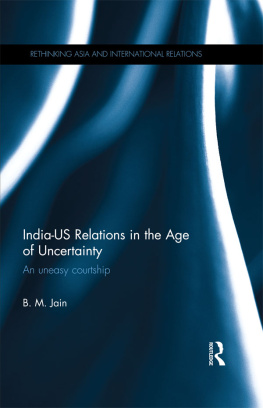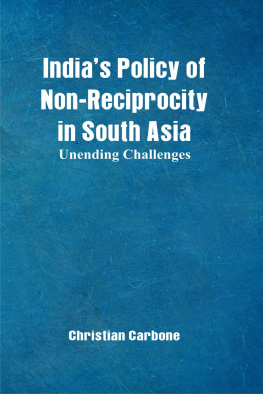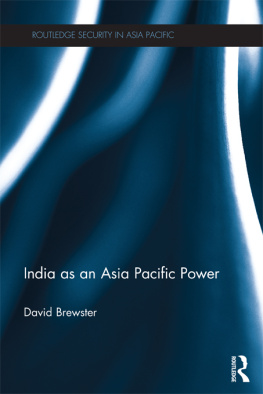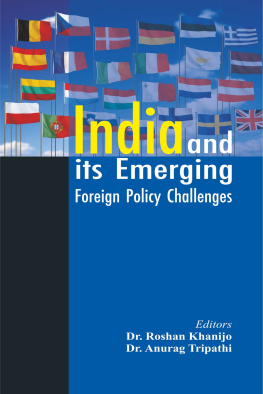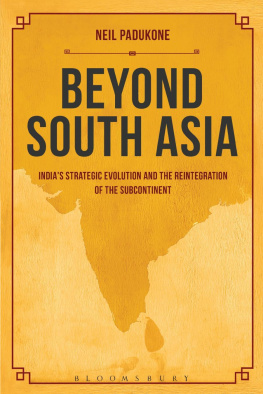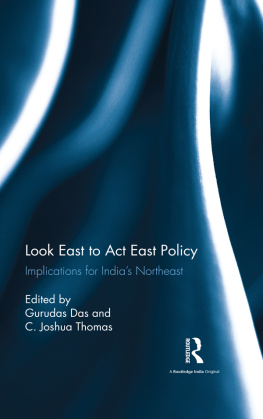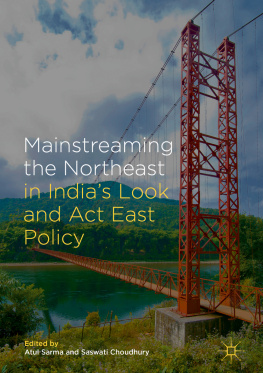India and Southeast Asia
The Institute of Southeast Asian Studies was established as an autonomous organization in May 1968. It is a regional research centre for scholars and other specialists concerned with modern Southeast Asia, particularly the multi-faceted problems of stability and security, economic development, and political and social change.
The Institute is governed by a twenty-two member Board of Trustees comprising nominees from the Singapore Government, the National University of Singapore, the various Chambers of Commerce, and professional and civic organizations. A ten-man Executive Committee oversees day-to-day operations; it is chaired by the Director, the Institute's chief academic and administrative officer.
International Politics in Asia Series
Edited by Michael Leifer, London School of Economics
China and the Arms Trade
Ann Gilks and Gerald Segal
Soviet Foreign Policy in Southeast Asia
Leszek Buszynski
ASEAN and the Security of South-East Asia
Michael Leifer
China's Policy Towards Territorial Disputes: The Case of the South
Sea Islands
Chi-kin Lo
INDIA AND
SOUTHEAST ASIA
Indian Perceptions and Policies
MOHAMMED AYOOB
PUBLISHED UNDER THE AUSPICES OF THE
INSTITUTE OF SOUTHEAST ASIAN STUDIES,
SINGAPORE BY
London and New York
First published 1990
by Routledge
11 New Fetter Lane, London EC4P 4EE
This edition published in the Taylor & Francis e-Library, 2003.
Simultaneously published in the USA and Canada
by Routledge
a division of Routledge, Chapman and Hall, Inc.
29 West 35th Street, New York, NY 10001
1990 Mohammed Ayoob
All rights reserved. No part of this book may be reprinted or reproduced or utilized in any form or by any electronic, mechanical, or other means, now known or hereafter invented, including photocopying and recording, or in any information storage or retrieval system, without permission in writing from the publishers.
British Library Cataloguing in Publication Data
Ayoob, Mohammed
India and Southeast Asia: Indian perceptions and
policies. (International politics in Asia Series)
1. India (Republic). Foreign relations
I. Title II. Institute of Southeast Asian Studies
III. Series
327.54
ISBN 0-203-40623-0 Master e-book ISBN
ISBN 0-203-71447-4 (Adobe eReader Format)
ISBN 0-415-03894-4 (Print Edition)
Library of Congress Cataloging in Publication Data
Ayoob, Mohammed, 1942
India and Southeast Asia: Indian perceptions and policies/
Mohammed Ayoob.
p. cm.(International politics in Asia series)
Includes index.
ISBN 0-415-03894-4
1. Asia, SoutheasternForeign relationsIndia. 2. India
Foreign relationsAsia, Southeastern. 3. IndiaForeign relations19471984. 4. IndiaForeign relations1984I. Institute of Southeast Asian Studies. II. Title. III. Series.
D525.9.U6A96 1990
Contents
Preface
This study attempts to analyse first, how Indian policy-makers and groups influential in the foreign policy-making process perceive the importance of Southeast Asia within the overall Indian foreign policy framework; and, second, what sort of policies have emerged, or are likely to emerge, from these perceptions, and how far they have served, or are expected to serve, India's political and strategic objectives. In order to be meaningful, any analysis of such perceptions, and their subsequent translation into policies, has to be put in the context of the broad Indian foreign policy and strategic design as well as that of India's relations with, and approach towards, this region since Indian independence in 1947. The first two chapters, which comprise nearly a quarter of the total text, have attempted to provide precisely these contexts so that the reader can decipher both the changes and continuities in Indian perceptions of, and policies towards, Southeast Asia in the present decade.
to seven are the major part of the book, and analyse current perceptions of the Indian foreign policy and defence community of Southeast Asia, its two main sub-regions, ASEAN and Indochina, and the major international issues affecting relationships both within and among these two sub-regions. These chapters also analyse Indian perceptions of the linkages between Indian interests in Southeast Asia and other major Indian foreign policy and security concerns, particularly in the larger Asia-Pacific region. These chapters further examine the connection between these perceptions and the policy followed by the Indian government towards the region as a whole, towards the major regional actors, and towards important regional issues that are of international significance. The eighth, and last chapter focuses on the common themes to emerge out of this study, and locates them within the broader context of Indian strategic and political interests.
This study is primarily focused on the strategic and political dimensions of Indian policy towards, and interactions with, Southeast Asia. This reflects the intellectual bias of the author on the one hand, and his firm conviction that economic considerations, although increasingly important in India's policy calculus towards this region, are clearly secondary in terms of their influence on the policy output as compared to political and strategic factors.
It is impossible to analyse perceptions scientifically except on the basis of questionnaires sent out to a random sample of the universe whose perceptions one is engaged in analysing. This is a method which obviously one cannot follow when attempting to analyse perceptions of a country's foreign policy and defence community, especially when one is interested in perceptions regarding such sensitive subjects as a country's strategic design and its foreign policy framework. A great deal, therefore, depends on the analyst's access to, and rapport with, both the policy-making community and the larger group of influential individuals who presumably have an input into the policy-making process, and, in the final analysis, to his intuitive judgement based on his familiarity with the subject and his ability to separate the grain from the chaff. I undertook the present study in the knowledge that, while my analysis of Indian perceptions might occasionally diverge from the reality of such perceptions, this risk was worth taking because of my confidence that I was in a better position than most others to undertake the project since I met most of the criteria for the successful completion of this task.
A substantial part of the analysis in with members of the Indian foreign policy and defence community, including active and retired politicians who have participated in the Indian foreign policy-making process in one capacity or another, serving and retired senior bureaucrats of the various ministries and departments involved in making foreign and defence policies as well as some serving and retired senior officers of the armed forces. These interviews have been supplemented by my conversations with defence and foreign policy analysts among academics and journalists, and with representatives of trade and industry. Published works reflecting the views of segments of the Indian foreign policy and strategic community have also furnished me with essential clues to the thinking of the Indian policy-makers and the larger foreign policy elite. General books and articles on Indian foreign and defence policies, which I have read and reread over many years, have, of course, provided me with much of the essential background for the project.


